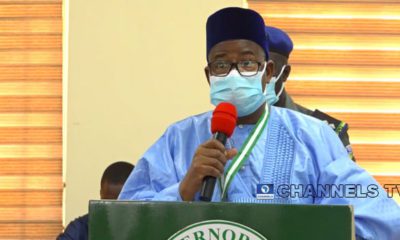Global Issues
Issues In Development Studies -By Suleiman Lawan Kolomi
rural poverty is most often the product of poor infrastructure that hinders development and mobility. Rural areas tend to lack sufficient roads that would increase access to agricultural inputs and markets. Poor infrastructure hinders communication, resulting in social isolation among the rural poor, many of whom have limited access to media and news outlets. Such isolation hinders integration with urban society and established markets, which could result in greater development and economic security.

SUMMARY OF A SEMINAR TOPIC: FROM THE BOOK “COMPANION TO DEVELOPMENT STUDIES, 3rd edition. Edited by Vandana Desai & Robert B. Potter”
PART 4: RURAL DEVELOPMENT.
TOPIC: 4.1 RURAL POVERTY, EDWARD HEINEMANN
Rural poverty means poverty in the rural areas, this include factors of rural society, economy, political systems, rural population etc. that give rise to poverty in those areas.
To understand rural poverty there is need to define rural population, it is a very wide term that International statistics rely on definitions giving by countries on what ‘rural’ and ‘urban’ constitute; these vary from country to country. Consequently, in many cases, areas classified as urban may have characteristics of rural, particularly in terms of their reliance on agriculture, and this can lead to a significant undercounting of the rural population. So also areas that are regarded as rural may have some characteristics of an urban area.
The population of rural communities has increased from 2.4 billion in 1980 to about 3.1 billion in 2010; but it is doing so ever more slowly. Currently 0.4 percent per year, and shortly after 2020 it peaks to about 3.2 billion and thereafter it will start to fall. According to the UN Department of Economic Affairs (2009), in 2010 around 55 percent of the total population of the world was classified as rural, and by 2025 the figure will be below 50 percent. There is difference across regions e.g, in Latin America and the Caribbean the rural population has been in decline since the late 1980s, and only 20 percent of the population was still rural in 2010. At the other extreme, in sub-Saharan Africa and South-central Asia between 60 and 70 percent of the population was still rural in 2010, and in both regions a majority of the population will be rural for another 20 years or more.
Rural poverty is also rooted in historical factors and economic, social and political relations within societies. It may be reflected in various forms of exclusion, discrimination and disempowerment, and unequal access to, and control over, assets. Rural poverty is one key driver of migration which affects the rural population growth and decrease; poverty rates are considerably higher in the rural areas than in the urban. World Bank (2020) estimated about 736 million people living on less than US$1.90/day. 413 million of these people live in sub-Saharan Africa and a majority of the world’s poor will be rural for many decades to come.
Consequently, rural poverty is most often the product of poor infrastructure that hinders development and mobility. Rural areas tend to lack sufficient roads that would increase access to agricultural inputs and markets. Poor infrastructure hinders communication, resulting in social isolation among the rural poor, many of whom have limited access to media and news outlets. Such isolation hinders integration with urban society and established markets, which could result in greater development and economic security.
Therefore, moving out of poverty is a slower process, based on establishment of basic social amenities; successful enterprise or employment; and shaped by ownership of land, livestock or other productive assets; education; participation in non-farm wage labor, self-employment and good health which should be the focus of the government, donor organizations, and development agencies.
Suleiman Lawan Kolomi, B.Sc., PGDCMPC, (M.Sc. in view)
BAYERO UNIVERSITY, KANO
suleimankolomi@gmail.com
JUNE, 2021©




















